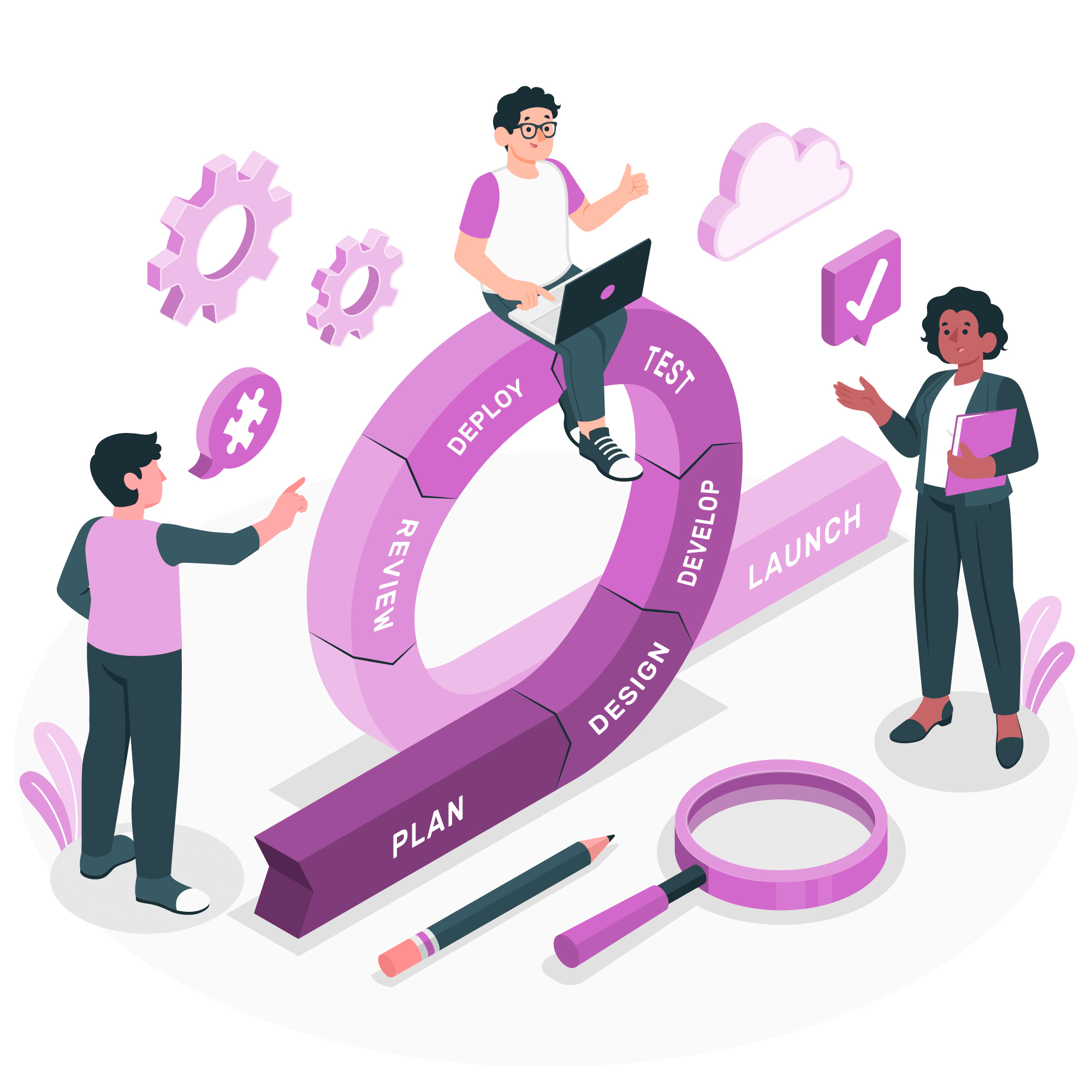Agile Software Development
Agile software development is the process of having the business/client during the development process, achieving through splitting the development process into sprints and following the sprint ceremonies.
- Home
- »
- Technology Services
- »
- Agile Software Development
Agile Methodologies
Decide on what ceremonies are required, and their frequency, eg.
- Sprint Backlog Refinement
- Sprint Planning Meeting
- Daily Stand-up Meeting
- Sprint Review Meeting
- Sprint Retrospective Meeting
The ceremonies are followed disciplined, as these ceremonies create the value and process to keep the software development process agile.
If these ceremonies are included, the agile process is improved.

What Are Scrum Roles? Scrum
As you probably know, there are three roles in Scrum:
The role of a Product Owner
The Product Owner (PO) decides how the product will look like and what features it will contain. He/she is expected to incorporate stakeholder feedback to build the highest value product increments every sprint. POs maintain the product backlog and ensure that everyone knows the priorities.
The main activities performed by the Product Owner include:
- Expressing product backlog items.
- Ordering the items in the product backlog to reach the goals.
- Ensuring that the product backlog is visible and transparent.
- Ensuring that the team understands the backlog items.
- Optimizing the value of the development team’s work.
Like Project Managers, POs vary in their specific mix of skills and qualifications.
The role of a Project Manager
A project manager assists the team in performing at their highest level. He/she protects the team from any internal and external distractions, holding team members accountable to their working agreements, Scrum values, and the framework itself.
The common roles of a project manager include:
- Coach: PM facilitates meetings and conversations.
- Agile advocate: PM reinforces Agile principles throughout the company.
- Protector: PM works with interferences.
- Servant leader: PM leads without authority and puts the team first.
Project Masters usually
- Select techniques for effective product backlog management.
- Ensure that all the goals and scope are understood by everyone on the team.
- Understand how to practice agility.
- Help the team to understand the need for concise backlog items.
- Ensure the PO knows how to arrange the product backlog to maximize value.
- Facilitate Scrum ceremonies.
Acceptance Criteria
Acceptance criteria are the most important part of a user story which guide the team to build right application. Therefore, always make sure to add acceptance criteria and define the scope of the user story before start the sprint.
In agile we write user stories to describe a feature that should be implemented by the team. Normally the syntax is, As system admin I want to add a user to the system so that they can access the system.
But just writing a user story in a standard way won’t explain the whole requirement to the development team. Therefore the user story is incomplete without acceptance criteria.

Writing acceptance criteria
Guidelines which help you to write acceptance criteria.
- See the feature as an end user.
- Consider functional, nonfunctional and performance criteria.
- Clear and simple.
- Not test combinations.
Functional, non functional and performance criteria
- Functional: Successfully logged in users should be navigated to home page with a welcome message.
- Nonfunctional: Welcome message should display in the upper right corner of the home page.
- Performance: Home page should load within 1 seconds.
What are Acceptance Criteria Used For?
- To define boundaries
- To reach consensus
- To serve as a basis for tests
- To allow for accurate planning and estimation
Story Point Estimating (T Shirt v Fibonacci)
- The agreed principle for Story Point estimating is the fibonacci scale.
- Story points can have a value of 1,2,3,5,8,13 and 21.
- Anything above 21 is considered an Epic.
Story points are a relative sizing scale that do not relate to actual times. A useful guide can be found at https://www.scrum.org/resources/blog/why-do-we-use-story-points-estimating and https://manifesto.co.uk/agile-concepts-estimating-planning-poker
Do you have any projects in mind?
Contact us today to start your agile journey!
